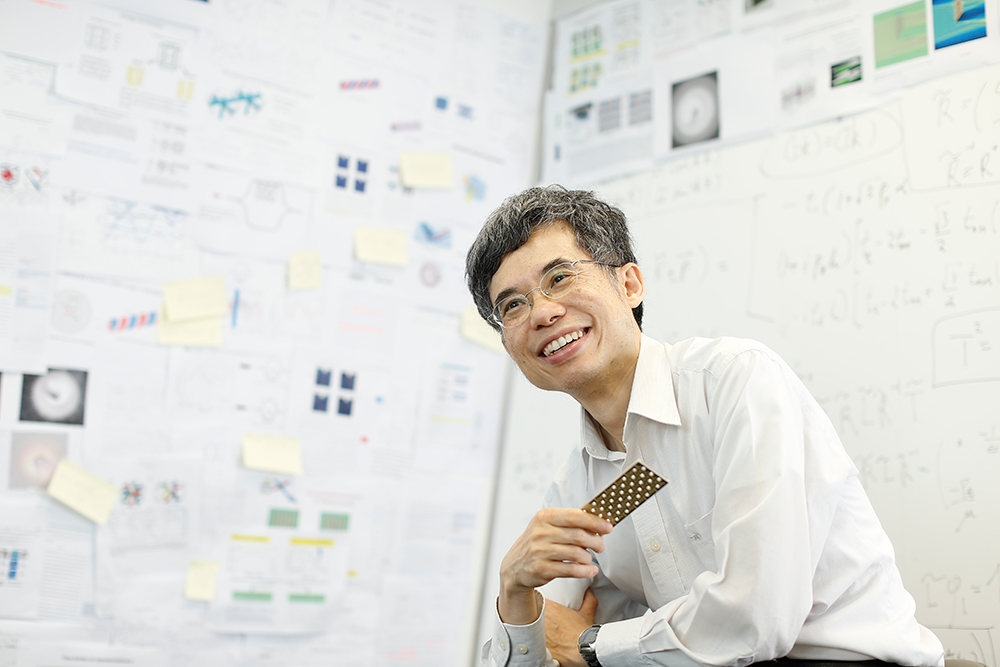Creating Waves in Research


The study of electromagnetic and acoustic waves dates back to the antiquities. About two decades ago, a revolution began in this classic field of research, propelled by both theory and experiments, which demonstrate the feasibility of realizing man-made materials with wave manipulation functionalities beyond the defined limits of those found in nature. These “wave functional materials” include photonic/phononic crystals, metamaterials and plasmonic structures.
Prof Che Ting Chan leads an Areas of Excellence Project for such materials and beyond. He and his team work on the theory of new wave functional materials. His group members design, fabricate and test new artificial materials which are engineered to have properties that are not found in nature and have capabilities beyond normal materials. Examples are metamaterials that can make an object undetectable (invisibility cloaks) and photonic/phononic artificial materials that are "topological" which can carry signals that are uninterruptable during their transport. His group works on "non-Hermitian" systems which carry "exceptional points" that can be applied to make sensors with enhanced response. They also consider the possibility of using light and sound to manipulate objects. Examples are using light to attract an object (tractor beam). The group conceives and realizes new ideas of wave/material interactions which can bring some future technologies one step closer to reality.
Prof Che Ting Chan is Daniel CK Yu Professor of Science, Associate Vice-President for Research and Development (Research), and Chair Professor of Physics. He has been an elected member of the American Physical Society since 1996 and is a Croucher Senior Research Fellow. His research in phononic metamaterials earned him a Brillouin Medal in 2013.